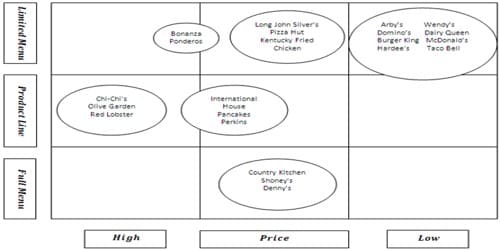Strategic groups are conceptually defined clusters of competitors that share similar strategies and therefore compete more directly with each other than other firms in the same industry. It refers to a group of companies who follow the same strategy within a particular industry.
Strategic group analysis might be conducted on the basis of the following factors:
The breadth of the market: The product-line breadth can be used as a basis for strategic group analysis. Such as – wide market firms, narrow market firms, etc.
Product or service quality: Strategic group analysis might be conducted on the basis of the service or product quality by various firms such as – high quality, medium quality, and low quality.
Price: Strategic group analysis might also be conducted on the basis of the price settled by various firms for their products or services. Such as – high price, medium price, and low price etc.
Geographic coverage: Strategic group analysis might also be conducted by the geographical coverage of the firms, i.e., local, regional, national, global etc.
Profit/Non-profit: Strategic group analysis might be conducted on the basis of the profit earnings, i.e. – profit earning firms / non-profit earning firms.
Use of distribution channels: Strategic group analysis might also be conducted on the basis of the distribution channels used by various firms.
The degree of service offer: Strategic group analysis might also be conducted by the degree of service offered by the firms. So, these are the various factors by which strategic group analysis might be conducted.
Analyzing the strategic groups within an industry can be of use in 3 ways:
(1) Help in making strategic moves by watching those of the rivals
(2) Provides with various options by taking ideas from other strategic groups
(3) Helps in identifying the untapped market
Hence, this concludes the definition of Strategic Groups along with its overview.















